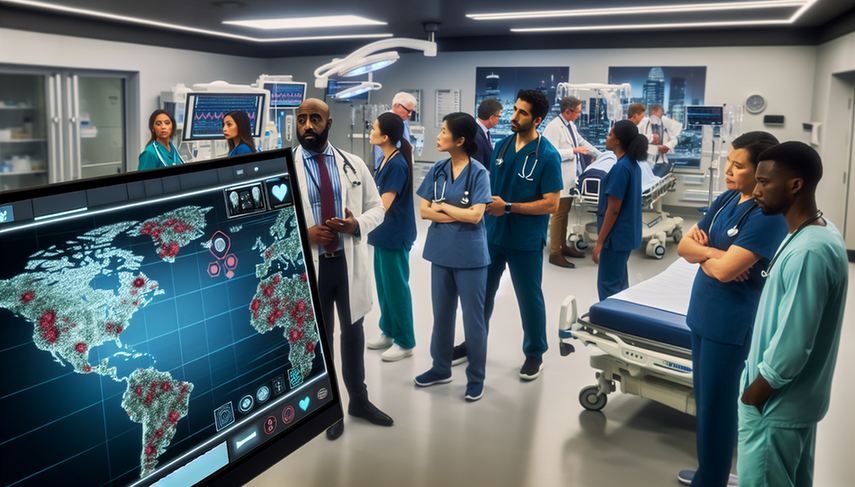AI in Health Emergencies: Enhancing Epidemiological Surveillance and Rapid Response Systems

Artificial intelligence (AI) has emerged as a crucial tool in managing health emergencies, offering advanced capabilities for epidemiological surveillance and rapid response systems. In a world where infectious diseases can spread rapidly, AI provides a proactive approach to detect and mitigate outbreaks before they escalate into pandemics. This article explores how AI is transforming public health through the implementation of predictive systems and enhancing emergency response capabilities.
Diving Deeper into the Use of AI in Health Emergencies
The integration of AI in epidemiological surveillance allows for faster and more accurate outbreak detection. For instance, the use of machine learning techniques has proven effective in predicting the emergence of infectious diseases, as seen in the context of COVID-19. These tools analyze large volumes of data to identify patterns that may indicate an imminent outbreak, enabling public health professionals to take timely preventive measures.
Moreover, AI facilitates real-time data management, which is essential for decision-making in public health emergencies. The ability to process and analyze data from multiple sources, such as electronic health records and sensor data, allows AI systems to provide evidence-based recommendations for resource allocation and the implementation of public health interventions.
A notable example is the use of smart sensors and AI techniques for rapid pathogen detection, which has been crucial during the COVID-19 pandemic. These systems not only enhance diagnostic capabilities but also optimize treatment strategies by correlating viral load with disease progression.
Conclusions
The implementation of AI in epidemiological surveillance and response to health emergencies represents a significant advancement in public health. By improving the ability to detect outbreaks and respond rapidly, AI not only helps mitigate the impact of infectious diseases but also strengthens the resilience of the healthcare system against future threats. Ongoing collaboration between technologists and healthcare professionals will be essential to maximize the potential of these technologies and ensure their effective integration into public health practices.
Referencias
- [1] Emerging Microorganisms and Infectious Diseases: One Health Approach for Health Shared Vision
- [2] Public health emergency decision-making and management system sound research using rough set attribute reduction and blockchain
- [3] Electrochemical SARS-CoV-2 Sensing at Point-of-Care and Artificial Intelligence for Intelligent COVID-19 Management
Created 20/1/2025
